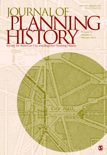
Journal of Planning History
Scope & Guideline
Discovering the Evolution of Planning for Tomorrow's Cities
Introduction
Aims and Scopes
- Historical Analysis of Urban Planning:
The journal emphasizes the historical evolution of urban planning, examining past practices, policies, and ideologies that have influenced modern city development. - Interdisciplinary Approaches:
A core aspect of the journal's scope is its interdisciplinary methodology, drawing from history, sociology, geography, and political science to analyze planning issues. - Social Justice and Inequality:
The journal consistently addresses themes of social justice, exploring how urban planning has perpetuated inequalities and examining movements aimed at rectifying these disparities. - Cultural and Racial Dimensions:
The journal investigates the cultural and racial aspects of urban planning, highlighting how these factors affect community development and spatial organization. - Environmental Considerations:
The inclusion of environmental history and sustainability in planning discussions is a significant focus, reflecting on how historical practices impact current environmental policies and urban resilience.
Trending and Emerging
- Intersection of Race and Planning:
Recent publications increasingly explore the intersections of race, urban planning, and social equity, reflecting a heightened awareness and critique of systemic inequalities within planning practices. - Impact of Climate Change on Urban Development:
There is a growing trend in addressing the impact of climate change on urban planning, emphasizing the need for sustainable practices and resilience strategies in historical contexts. - Community Engagement and Participatory Planning:
Emerging themes focus on participatory planning processes that engage communities, highlighting the importance of inclusive decision-making in shaping urban spaces. - Technological Advancements in Planning:
The integration of technology in urban planning discussions is becoming more prominent, examining how digital tools and data analytics transform planning practices and public engagement. - Global Perspectives on Urban Planning:
An increasing number of articles are adopting global perspectives, comparing planning practices and policies across different cultural and geographical contexts, thereby enriching the dialogue around urban planning.
Declining or Waning
- Traditional Urban Planning Models:
There is a noticeable decline in discussions surrounding traditional urban planning models, as the field increasingly embraces more innovative and flexible approaches to urban development. - Focus on Rural Planning:
The journal has seen a decrease in articles specifically addressing rural planning issues, suggesting a shift towards urban-centric discussions and the challenges faced in metropolitan areas. - Historical Preservation Practices:
While still relevant, the frequency of articles concentrating on historical preservation practices has waned, possibly due to emerging interests in adaptive reuse and sustainability in urban contexts. - Classic Theoretical Frameworks:
The use of classical theoretical frameworks in planning discussions is becoming less prevalent, as newer, more dynamic theories gain prominence in the literature. - Single-Narrative Case Studies:
The journal is moving away from singular, isolated case studies, favoring broader comparative analyses that encompass multiple contexts and perspectives.
Similar Journals

Documents d Analisi Geografica
Connecting Scholars and Ideas in Geography and PlanningDocuments d'Anàlisi Geogràfica is a distinguished academic journal published by Universitat Autònoma de Barcelona, focusing on the fields of geography, planning, and earth-surface processes since its inception in 1988. With an Open Access policy implemented in 2012, the journal aims to facilitate the widespread dissemination of geographical research and insights, accessible to a global audience. Currently ranked in Q3 for both Earth-Surface Processes and Geography, Planning and Development categories, it serves as a vital platform for researchers, practitioners, and students to share their findings and enhance knowledge in these critical fields. The journal is indexed in Scopus, where it stands at rank #470 in Social Sciences and #106 in Earth and Planetary Sciences, reflecting its growing impact in relevant academic communities. Based in Barcelona, Spain, Documents d'Anàlisi Geogràfica continues to contribute substantially to geographical scholarship by exploring contemporary issues and advancements in a rapidly evolving world.

Bitacora Urbano Territorial
Championing Open Access for a Collaborative Academic CommunityBitacora Urbano Territorial is an esteemed open-access journal published by Universidad Nacional de Colombia, dedicated to advancing research in the intricate fields of urban studies, geography, and the arts and humanities. Since its inception in 2009, this journal has become a vital platform for academics, practitioners, and students alike in analyzing and addressing the multifaceted dimensions of urbanization, spatial planning, and territorial development. With an evolving focus and a commitment to fostering scholarly dialogue, Bitacora Urbano Territorial proudly holds a Q2 ranking in Arts and Humanities (miscellaneous) and Q3 rankings in both Geography, Planning and Development and Urban Studies, reflecting its growing impact within the academic community. The journal welcomes contributions that explore innovative research, case studies, and theoretical advancements, providing a comprehensive reflection of urban transformations in Latin America and beyond. Emphasizing accessibility, the journal has embraced an open access model since 2016, ensuring that critical knowledge is disseminated widely to enhance understanding and promote collaboration across disciplines.

EURE-REVISTA LATINOAMERICANA DE ESTUDIOS URBANO REGIONALES
Connecting Scholars and Practitioners in Urban ResearchEURE-REVISTA LATINOAMERICANA DE ESTUDIOS URBANO REGIONALES, published by the Pontificia Universidad Católica de Chile, is a pivotal journal in the field of Urban Studies, focusing on the complexities and dynamics of urban and regional environments across Latin America. Since its inception in 1979 and transitioning to an open-access format in 1997, this journal aims to provide a platform for scholars, policymakers, and practitioners to share innovative research and insights on urban development, policy, and sustainability. With an impact factor robust enough to rank it in the Q2 category within Urban Studies and a Scopus rank of #124 out of 279, EURE stands out as a significant contributor to understanding urban phenomena in the region. Researchers and students alike will find in this journal a wealth of empirical studies, theoretical discussions, and case analyses, enriching the discourse on urban challenges and opportunities in contemporary Latin America.
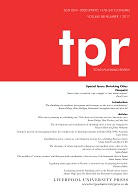
TOWN PLANNING REVIEW
Navigating Urbanization: Insights and InnovationsTOWN PLANNING REVIEW is a prestigious academic journal published by Liverpool University Press, focusing on pivotal research in the fields of urban studies and planning. Established in 1977, this journal has become a leading platform for the exploration of contemporary urban challenges and innovative planning solutions, aligning with its impressive Q1 rankings in both Geography, Planning and Development and Urban Studies. With a Scopus rank of 73 out of 279 in Urban Studies, it holds a strong presence in the academic community, making significant contributions to the scholarship and practice of town planning. Although it is not an open-access journal, it continues to reach a global audience by disseminating high-quality, peer-reviewed research. Researchers, professionals, and students interested in advancing their understanding of urbanization processes, planning methodologies, and policy implications will find TOWN PLANNING REVIEW an invaluable resource as it bridges theoretical insights and practical applications in the dynamic landscape of urban development.
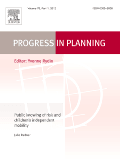
PROGRESS IN PLANNING
Innovative Insights for Effective PlanningPROGRESS IN PLANNING is a premier academic journal published by PERGAMON-ELSEVIER SCIENCE LTD, renowned for its impactful contributions to the fields of geography, urban planning, and development. With an impressive impact factor situating it in the Q1 quartile of its category for 2023, this journal ranks a notable #38 out of 821 in the Scopus listings, placing it in the 95th percentile within the realm of social sciences. Since its inception in 1973, the journal has established itself as a critical platform for the dissemination of innovative research and practical insights, fostering a deeper understanding of contemporary urban challenges and planning strategies. Although currently not offering open access, PROGRESS IN PLANNING continues to attract a diverse array of submissions, providing a vital resource for researchers, professionals, and students seeking to advance their knowledge and contribute to the evolution of planning practices worldwide.

Architektura & Urbanizmus
Connecting Scholars to Shape the Future of Urban SpacesArchitektura & Urbanizmus is a distinguished scholarly journal published by the Institute of History at the Slovak Academy of Sciences, with a specific focus on the fields of architecture, conservation, and urban studies. Since its transition to Open Access in 2021, the journal aims to broaden the accessibility of vital research findings to a global audience, fostering knowledge-sharing and collaboration among scholars, practitioners, and students alike. The journal has consistently contributed to the academic discourse since its inception and now spans converged years from 2007 to 2023, adapting to the evolving landscape of its disciplines. With its categorization in Q3 for both Architecture and Conservation, and Q4 in Urban Studies for 2023, it stands as a credible platform for disseminating innovative research and practical insights. The journal's current Scopus rankings reflect its growing influence in the field, offering a significant opportunity for researchers to contribute original work that addresses contemporary challenges in architecture and urban development. Situated in the heart of Bratislava, Slovakia, at Klemensova 19, Architektura & Urbanizmus invites contributions that enrich the architectural heritage and environmental integrity of urban spaces.
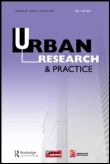
Urban Research & Practice
Navigating the Intersections of Geography and UrbanityUrban Research & Practice is a premier academic journal published by Routledge Journals, Taylor & Francis Ltd, dedicated to the interconnected fields of Urban Studies and Geography, Planning and Development. Established in 2008, this journal has rapidly established itself as a vital resource, achieving a Q1 category ranking in both fields as of 2023, demonstrating its leading role in shaping contemporary urban research. With a Scopus ranking that places it within the top 20% of journals in Urban Studies and the top 22% in Geography, it attracts high-impact contributions from scholars and practitioners alike. Although it currently does not offer Open Access options, the journal is committed to disseminating innovative research that addresses the complex challenges of urban environments, fostering insights that are essential for informed decision-making and sustainable urban development. Researchers, professionals, and students will find comprehensive analyses, case studies, and theoretical explorations that enrich the understanding of urban dynamics in today's ever-evolving landscapes.
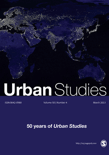
URBAN STUDIES
Transforming Urban Studies Through Critical Analysis and EngagementURBAN STUDIES, published by SAGE Publications Ltd, stands as a premier journal in the field of urban studies and environmental science, evidenced by its prestigious Q1 ranking in both categories for 2023. With an ISSN of 0042-0980 and an E-ISSN of 1360-063X, this UK-based journal has been disseminating pivotal research since its inception in 1964, and will continue to do so until 2024. As a leader in the social sciences, it ranks #11 out of 279 in the field of Urban Studies and #15 out of 219 in Environmental Science, achieving remarkable percentiles of 96% and 93% respectively. Although not an open-access journal, URBAN STUDIES provides a platform where scholars, practitioners, and students can engage with cutting-edge research, critical analyses, and innovative solutions addressing the complexities of urban environments. By publishing studies that encompass economic, social, and environmental dimensions of urbanization, the journal contributes significantly to the discourse on sustainable development and urban planning.

disP
Uncovering Insights for Sustainable Spatial SolutionsdisP is a premier journal dedicated to the interdisciplinary field of geographical planning and development, published by Routledge Journals, Taylor & Francis Ltd. With a focus spanning from 1980 to 2024, this esteemed publication serves as a crucial platform for sharing innovative research and insights that address pressing spatial challenges and planning methodologies. The journal is recognized for its significant contribution to academia, currently positioned in the Q2 category within Geography, Planning and Development according to the 2023 rankings. It occupies a noteworthy rank of #423 out of 821 in the Scopus database, placing it in the 48th percentile for social sciences within its category. Although it does not offer open access, disP remains an essential source for scholars, practitioners, and policymakers seeking to deepen their understanding of complex development issues and spatial strategies. Its commitment to excellence in research ensures that disP continues to be an influential voice in shaping the future of geographical planning and development.
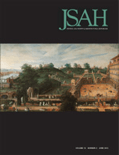
JOURNAL OF THE SOCIETY OF ARCHITECTURAL HISTORIANS
Bridging History and Modernity in Architectural StudiesJOURNAL OF THE SOCIETY OF ARCHITECTURAL HISTORIANS, published by the SOCIETY OF ARCHITECTURAL HISTORIANS, serves as a premier platform for the dissemination of scholarly research and critical discourse in the fields of architecture and architectural history. Established in 1970, this journal has undergone significant evolution, focusing on interdisciplinary studies that explore architectural heritage, theory, and practice. With a current impact factor that places it within the Q2 category in both History and Visual Arts and Performing Arts, as well as Q3 in Architecture, the journal maintains a robust reputation among academics and professionals alike. Although it operates under traditional access models, its essential role in fostering a deep understanding of architectural narratives and their socio-cultural contexts remains unparalleled. The journal also ranks favorably in Scopus, highlighting its importance in the arts and humanities, as well as engineering disciplines related to architecture. By bridging the gap between historical inquiry and contemporary architectural criticism, the JOURNAL OF THE SOCIETY OF ARCHITECTURAL HISTORIANS continues to be a vital resource for researchers, professionals, and students endeavoring to enrich their knowledge and contribute to this dynamic field.